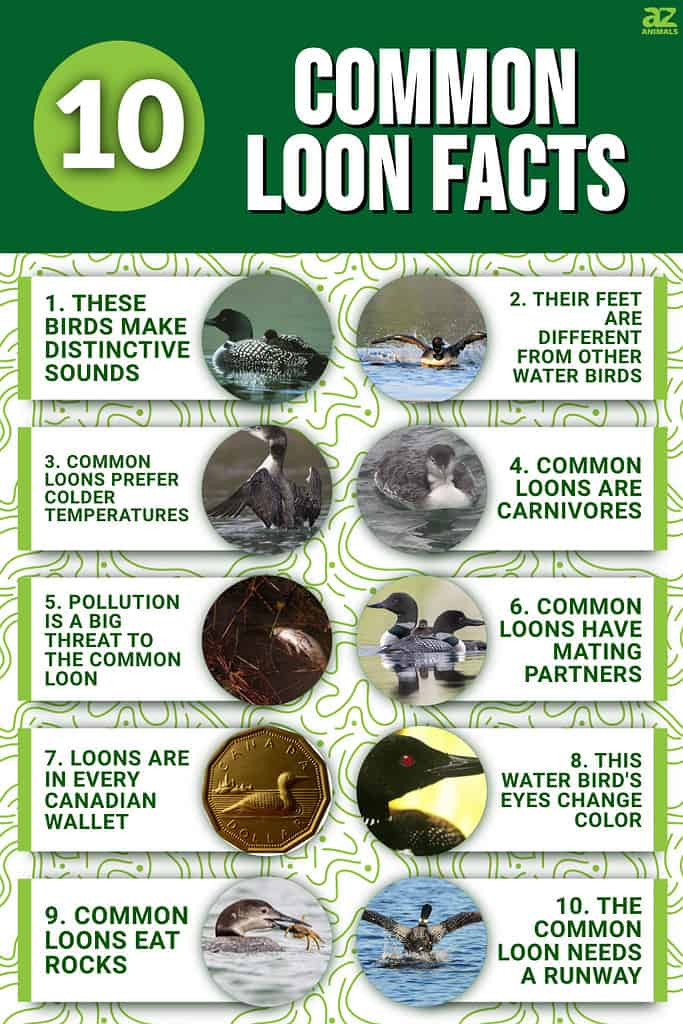
Common loons live in Canada, Alaska, Greenland, Iceland, and Scotland.
Common loon facts are that these are cute water birds that inhabit the colder regions of North America and Europe. These water birds are known to be noisy and expert divers. But, they have a stocky build which makes lift-off a bit of a challenge. But there are many other common loon facts to explore, starting with the ten below.
1. These Birds Make Distinctive Sounds

Common loons are known for their yodels, wailing, and hoots.
©National Parks Service – Public Domain
Common loons make a range of sounds, like a yodel, a wailing sound, a tremolo, and a hooting sound. They do this when trying to find a mate, to communicate between pairs, to signal an alarm, or to declare that they’ve made a nesting site. These common loons share many resemblances with other ducks but have a more pointed bill. Most of their feathers are black with a white underbelly and white spots on their wings and throats.
2. Their Feet Are Different From Other Water Birds

Loons’ feet are set back further on their bodies than other birds – causing them to skim on their bellies when landing on water.
Image: Ddonoher, Shutterstock
©Ddonoher/Shutterstock.com
Compared to other water birds, the feet of the common loon are set back much further on their bodies. Because of this fact, the common loon can swim swiftly through the water and even dive deeper. When landing on the water after flying, these birds skim on their bellies while other water birds skim the water with their feet. But, their far-set back feet make the birds look awkward when walking on the land, and this is where their name, ‘loon,’ originates.
3. Common Loons Prefer Colder Temperatures
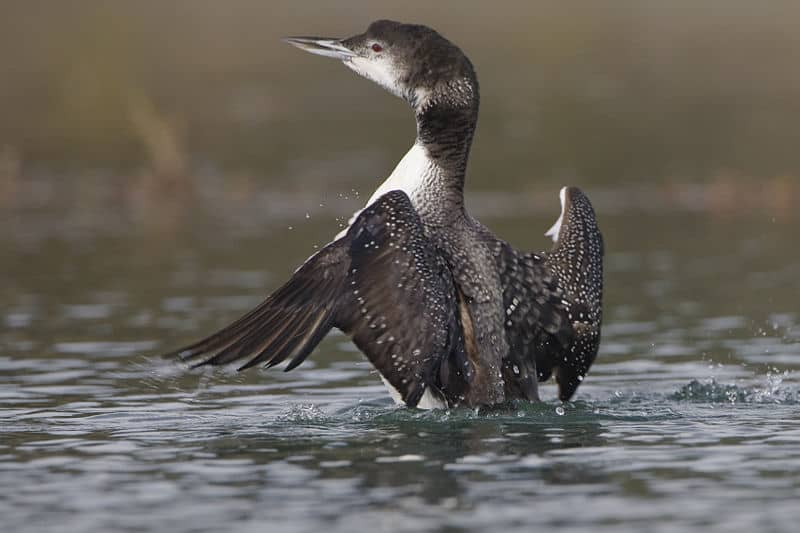
Common loons thrive in colder regions like Canada, Alaska, Greenland, Iceland, and Scotland.
It’s a fact that these common loons love living in colder areas near water. You find this popular water bird throughout Canada, Alaska, Greenland, Iceland, and Scotland. During the summertime, the common loon nests near small ponds and migrates to lakes or the oceanside for the winter.
4. Common Loons Are Carnivores
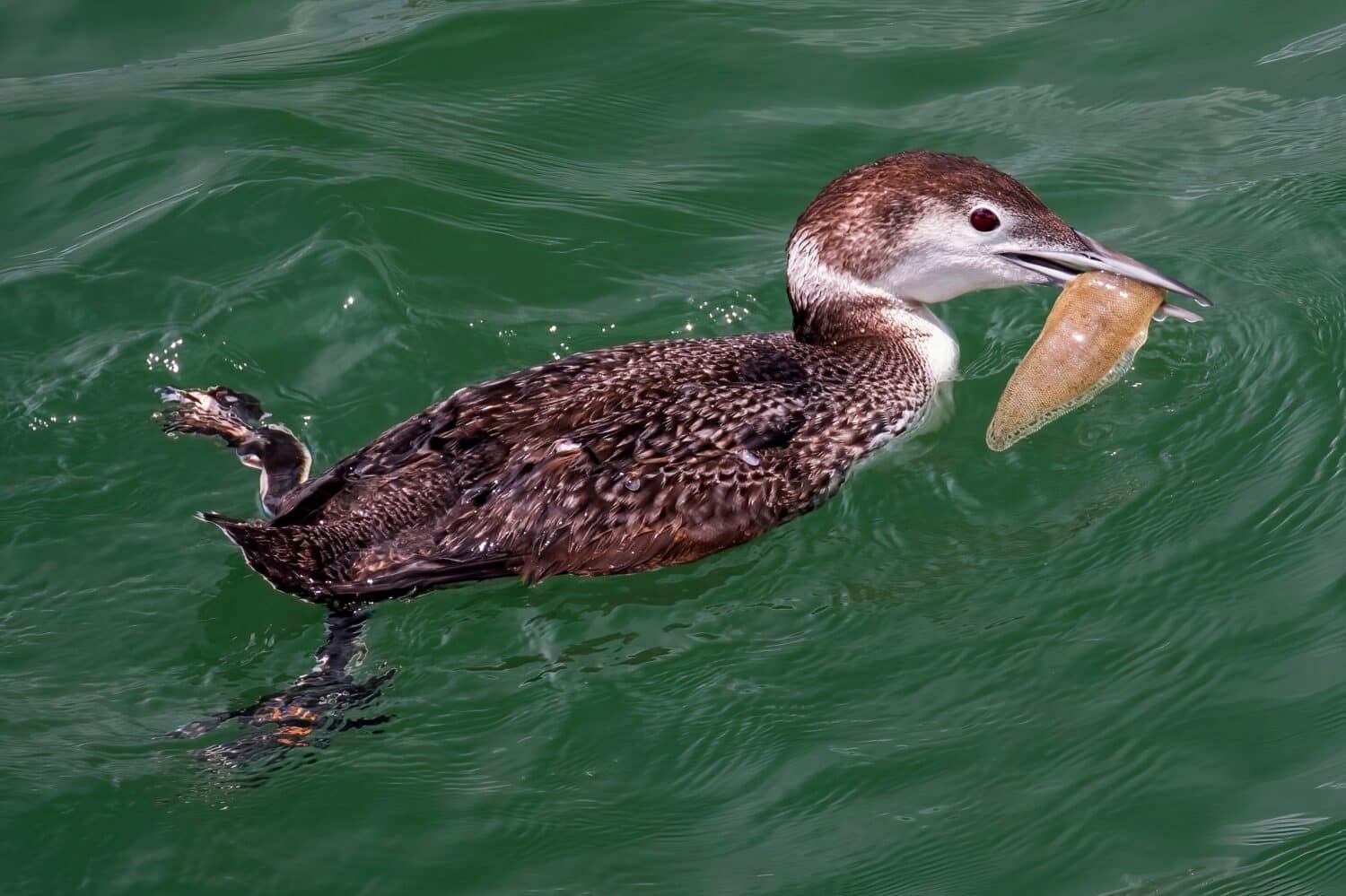
Loons are expert divers and eat a lot of fish.
Image: Amy Fought, Shutterstock
©Amy Fought/Shutterstock.com
These water birds eat a lot of fish and are expert divers and hunters. The fish that common loons eat depends on where they live at that time. Near the ocean, common loons eat flounder, herring, rockfish, and sea trout. The common loon will eat bass, perch, pike, sunfish, and trout when they live near fresh water.
These birds start hunting by putting their heads under the water’s surface and looking for prey. Once they spot their target, they can dive as deep as 200 feet to catch it. These birds swallow small fish whole but will carry bigger fish to a place where they can eat their meal slowly.
5. Pollution Is a Big Threat to the Common Loon
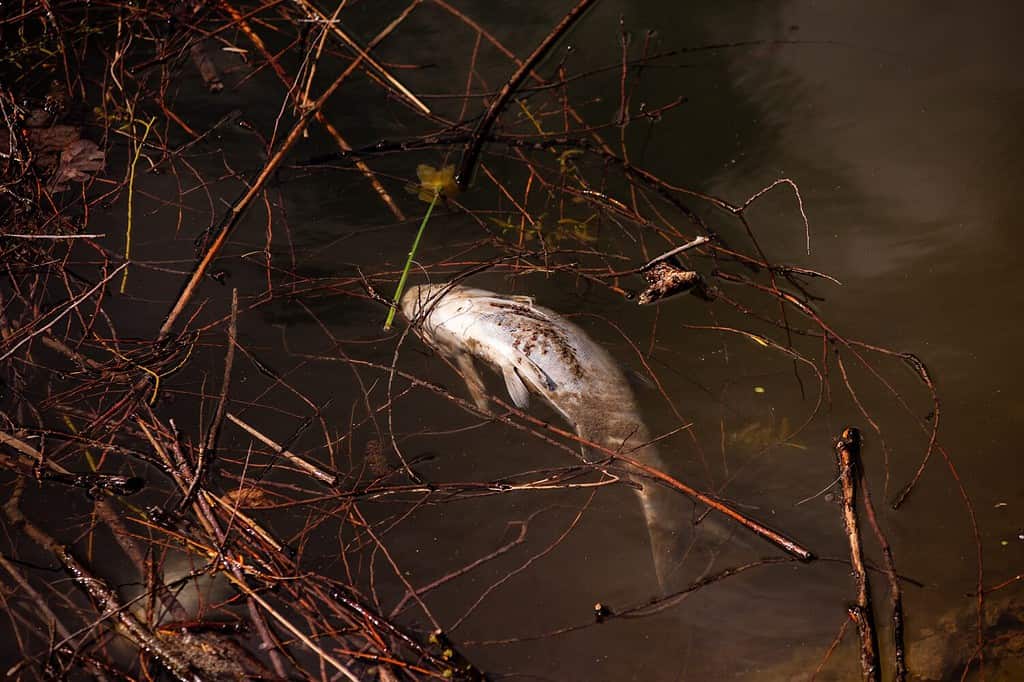
Water pollution has caused loons to disappear from some of their native regions.
©Julia Pavaliuk/Shutterstock.com
Because of water pollution, the population of common loons in eastern North America has completely disappeared. Interestingly, some common loons prefer living near polluted water sources. Suppose the water bird hatched near a polluted source and grew up there. In that case, they will look for a similarly contaminated water source to nest nearby later in their lives, which is an unfortunate common loon fact.
They will do this even if the lake has few fish or poor conditions for their chicks. But, despite this dire situation, the International Union for Conservation of Nature lists the common loon as ‘least concern.’ An additional threat these water birds face is their eggs being stolen by small mammals.
6. Common Loons Have Mating Partners
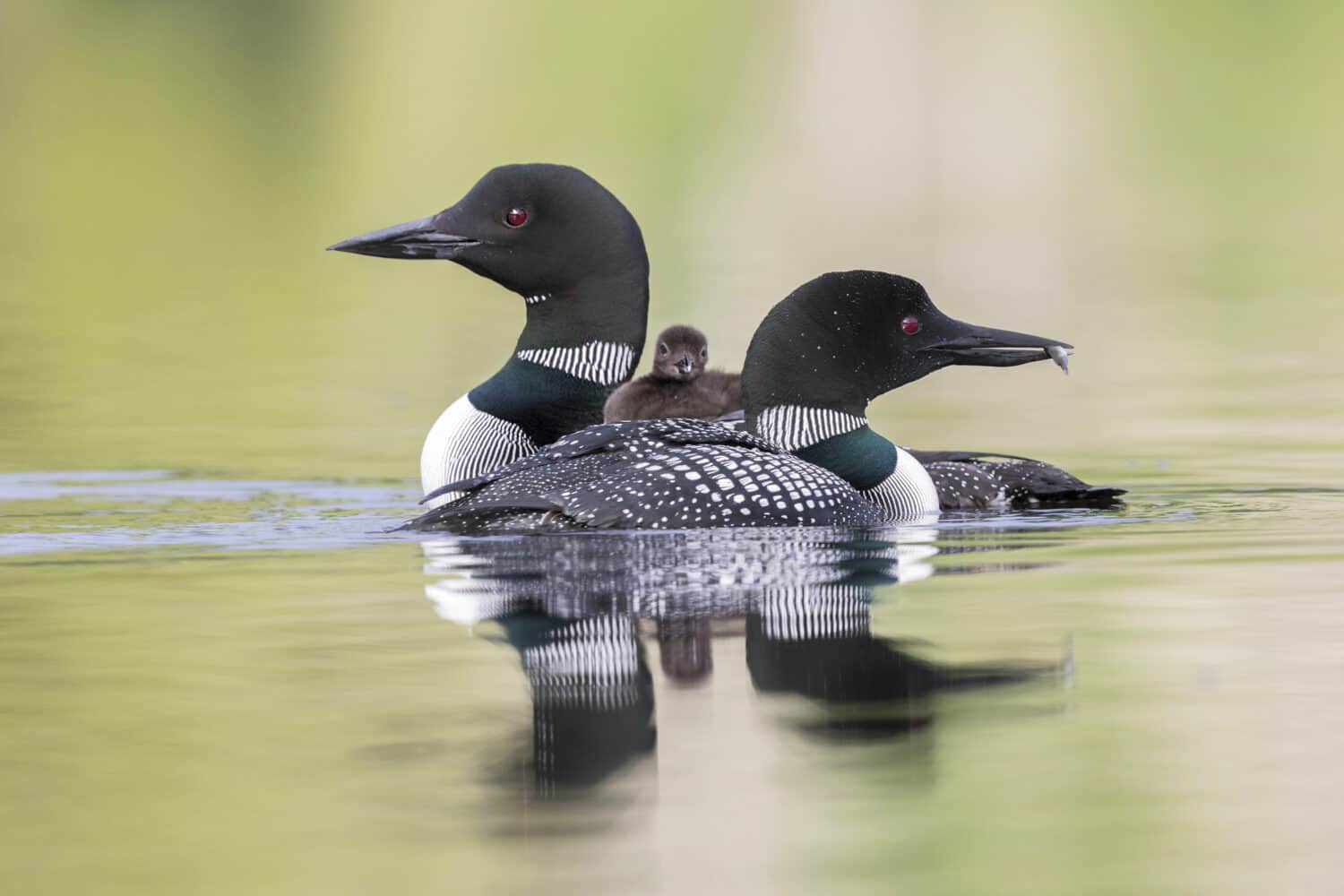
Like many bird species – loons are monogamous.
Image: Brian Lasenby, Shutterstock
©Brian Lasenby/Shutterstock.com
Common loons are monogamous, meaning the same male and female breed each year. These birds live for about ten years and usually breed once a year. Loons also typically only lay two eggs, which is minimal for water birds because some species lay up to 13 yearly. Common loons usually build their nests near the water’s edge and use sticks, reeds, and grasses.
They prefer to stay in the same nest or nesting site for their entire lives, but the male will move the nest if they are under threat by predators. These water birds reach sexual maturity at two years, and both parents share the incubation and feeding of the chicks. The chicks learn to swim and dive once they are a week old and fly when they are three months old.
7. Loons Are In Every Canadian Wallet

The lucky loon earned the honor of gracing the Canadian dollar.
Image: Matt Benoit, Shutterstock
©Matt Benoit/Shutterstock.com
In 1986, the Royal Canadian Mint planned to release a new dollar version with Queen Elizabeth’s face on one side and two voyagers in a canoe on the other. Authorities approved, but the molds with the two voyagers went missing one week before the coins were to be produced.
The Royal Canadian Mint decided to make a mold with the common loon at the last minute. These coins are a fan favorite in Canada; some people even think they are lucky. The common loon is not only celebrated in Canada but also in Minnesota. In 1961, Minnesota adopted the common loon as its state bird.
8. This Water Bird’s Eyes Change Color
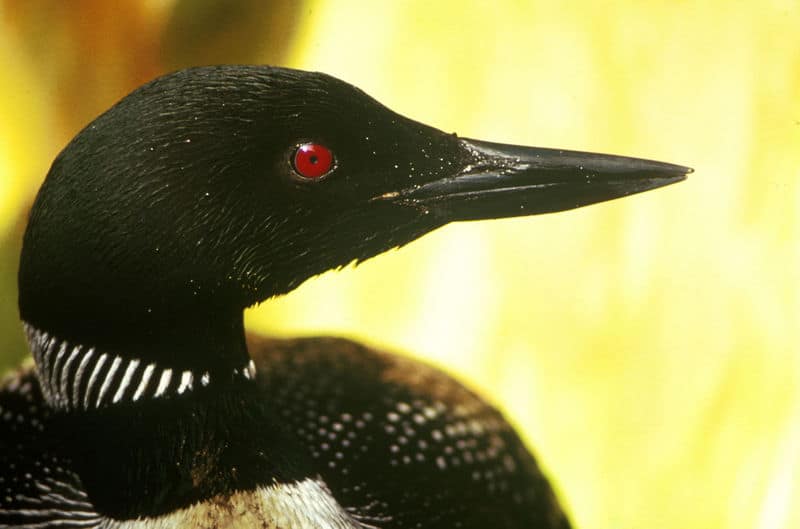
The common loon’s eyes are gray in winter and red in summer.
©Art Weber – Public Domain
During winter, the common loon’s eyes change to a dull gray color. Then, their eyes turn into a vibrant shade of crimson in the spring and summer months. We don’t know why this happens, but scientists predict that this change occurs to help with underwater vision or to attract mates.
9. Common Loons Eat Rocks

Because they don’t have teeth – loons supplement their diet with small pebbles to help grind food.
Image: Stephen A. Waycott, Shutterstock
©Stephen A. Waycott/Shutterstock.com
These water birds don’t have teeth, so they cannot chew their food. Common loons consume food by swallowing it whole or gulping down chunks of meat. Consuming food whole makes digestion difficult, which is why these water birds swallow rocks. The common loon ingests small pebbles to grind the food in their stomachs, helping with digestion – another curious common loon fact.
10. The Common Loon Needs a Runway

Most loons cannot take off on land and must run on the water’s surface while flapping their wings.
©iStock.com/Tammi Mild
Another fascinating fun common loon fact is that they are strong fliers and can reach flight speeds of 70 miles per hour. But, because they are heavyset and their legs are positioned far back on their bodies, they need a little runway before taking off. Most loons cannot take off on land and must run on the water’s surface while flapping their wings. They will do so for roughly 100 feet up to a quarter mile before lifting off and becoming airborne.
The photo featured at the top of this post is © iStock.com/Tammi Mild
Sources
- Tennessee Wildlife Resources Agency, Available here: https://www.tn.gov/twra/wildlife/birds/waterbirds/common-loon.html
- Washington Department of Fish and Wildlife, Available here: https://wdfw.wa.gov/species-habitats/species/gavia-immer
- Chesapeake Bay Program, Available here: https://www.chesapeakebay.net/discover/field-guide/entry/common-loon
- Minute Media, Available here: https://www.mentalfloss.com/article/81979/10-black-and-white-facts-about-common-loons
- Live Science, Available here: https://www.livescience.com/55577-common-loon.html
Thank you for reading! Have some feedback for us? Contact the AZ Animals editorial team.







